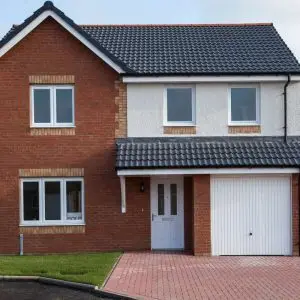SAP calculations, or Standard Assessment Procedure, is the UK government-approved method used for measuring the energy performance of residential buildings. It offers an insight into the energy efficiency of a property, evaluating how well it retains heat, how much CO2 it emits, and overall energy consumption.
Purpose and Importance of SAP Calculations L1A
The crux of SAP Calculations lies in the balance of various elements – the construction materials used, the types of heating and ventilation systems installed, lighting choices, and the inclusion of renewable technologies. But why should this matter to you, a developer or homeowner?
The answer is simple, yet impactful. Every new build or major renovation project in the UK is bound by law to meet specific energy performance standards, and a considerable part of this requirement is passing a SAP assessment. It’s not merely a bureaucratic hoop to jump through. It’s about building a future where energy-efficient, cost-effective, and sustainable living is the norm.
Key Components of a SAP Calculation
For developers, the significance of accurate SAP Calculations from the initial design stages cannot be overstated. It eliminates the risk of having to implement costly design adjustments later, ensures compliance with regulatory norms, and guarantees the delivery of homes that are both comfortable and economical for future residents.
For homeowners and self-build developers, SAP Calculations may appear daunting at first glance, but they’re the foundation of creating an energy-efficient abode. They influence critical decisions, like the type of heating system to install, the most effective insulation to use, and even what kind of windows would best conserve energy.
Compliance with Building Regulations through SAP Calculations
A SAP assessment forms the blueprint for a sustainable home. It’s not just about reducing your carbon footprint; it’s about creating a home that resonates with your values of sustainability and cost-effectiveness, without compromising on comfort.
At Ratio Seven, we understand the intricacies of SAP Calculations. We comprehend how they can seem overwhelming, especially when juggling with numerous other aspects of property development. That’s where we come in. Our experienced SAP assessors are here to guide you through the process from the start, providing expert advice tailored to your project.
We can assist with design advice that optimises energy performance and ensures that you meet the necessary regulatory requirements, all while maintaining a focus on your budget and lifestyle preferences.
SAP Calculations aren’t just an inconvenient necessity, they are a valuable tool. They can help you, whether a homeowner or developer, to create sustainable, energy-efficient, and comfortable living spaces. In the ever-evolving landscape of construction and property development, knowledge is power, and understanding SAP Calculations hands you the reins to build better.
Here at Ratio Seven, we are committed to turning your visions into reality, shaping a future where sustainable living is not just a distant ideal, but a tangible, achievable goal.
Frequently Asked Questions About SAP Calculations
What is an SAP calculation?
An SAP calculation refers to the Standard Assessment Procedure, which is a method used in the United Kingdom to assess and rate the energy performance of residential dwellings. SAP calculations are used to determine the energy efficiency of a building and are a requirement for new residential constructions, as well as for certain types of renovations or conversions.
The purpose of an SAP calculation is to evaluate the energy consumption of a building and to provide an energy rating based on factors such as insulation, heating systems, ventilation, and renewable energy sources. The calculation takes into account various parameters, including the construction materials used, the building’s size, the efficiency of heating and cooling systems, the lighting efficiency, and the ventilation strategy.
The SAP calculation results in a numerical score known as the SAP rating, which ranges from 1 to 100. A higher SAP rating indicates a more energy-efficient building, with lower carbon emissions and lower energy costs. The rating also provides an estimate of the annual energy costs for heating, hot water, and lighting in the dwelling.
SAP calculations are important for compliance with building regulations and energy performance standards. They help builders, developers, and homeowners to assess and improve the energy efficiency of their properties. The results of SAP calculations can also be used to compare different building designs and construction methods, enabling stakeholders to make informed decisions about energy-saving measures and sustainable building practices.
It’s worth noting that SAP calculations are specific to the United Kingdom and are not directly applicable in other countries. However, similar energy performance assessment methods may exist in different regions, each with its own specific requirements and criteria for evaluating the energy efficiency of buildings.
What does SAP stand for in SAP calculation?
In the context of SAP calculations, SAP stands for “Standard Assessment Procedure.”
What information is needed for a SAP calculation?
To perform a SAP (Standard Assessment Procedure) calculation, several pieces of information are required. The following are the key data points needed for an accurate SAP calculation:
- Dwelling Details: Basic information about the dwelling, such as its address, number of storeys, and total floor area.
- Building Fabric: Details about the construction materials used for walls, roofs, floors, and windows, including their U-values (a measure of thermal conductivity). This information helps assess the insulation properties of the building envelope.
- Heating System: Information about the primary heating system in the dwelling, including the fuel type (gas, electric, etc.), boiler efficiency, controls, and any secondary heating systems like electric heaters or solid fuel appliances.
- Hot Water System: Details about the hot water system, including the type of system (combi boiler, cylinder, etc.), fuel source, insulation, and controls.
- Ventilation: Information about the ventilation strategy, such as the type of ventilation system (mechanical, natural, or a combination), heat recovery systems, and fan efficiency.
- Lighting: Data regarding the lighting setup, including the lighting type, controls, and energy efficiency measures like low-energy bulbs or LED lighting.
- Renewable Energy: If applicable, information about any renewable energy systems installed in the dwelling, such as solar panels or heat pumps.
- Occupancy: The number of occupants in the dwelling, as well as their occupancy patterns, such as the number of hours spent at home during the day or night.
- Solar Gains: Details about solar gains, including the orientation and shading of the building, which affect the amount of solar energy entering the dwelling.
- Infiltration: Data on the air permeability of the building, often measured by an airtightness test, which indicates how much-uncontrolled air leakage occurs through gaps and cracks.
These are the primary pieces of information needed for a SAP calculation. It’s important to note that specific SAP software or calculators are available to assist in performing the calculations accurately and in compliance with the relevant regulations and standards.
Is a SAP the same as an EPC?
No, a SAP (Standard Assessment Procedure) and an EPC (Energy Performance Certificate) are not the same, although they are related to the energy performance assessment of buildings.
The SAP calculation is a methodology used in the United Kingdom to assess and rate the energy efficiency of residential dwellings. It is primarily used for compliance with building regulations and provides an energy rating based on various factors such as insulation, heating systems, ventilation, and renewable energy sources. The SAP calculation results in a numerical SAP rating that indicates the energy efficiency and estimated annual energy costs of a dwelling.
Comparing SAP Ratings and Energy Performance Certificates (EPCs)
On the other hand, an EPC is a document that provides information about the energy performance of a building. It is a legal requirement in many countries, including the UK, when a property is sold, rented, or constructed. The EPC includes an energy rating similar to the SAP rating, which indicates the energy efficiency of the building on a scale from A (most efficient) to G (least efficient). The EPC also provides recommendations for improving the building’s energy performance and reducing carbon emissions.
While both the SAP calculation and the EPC assess the energy performance of buildings, they serve different purposes. The SAP calculation is a technical assessment used during the design and construction stages to ensure compliance with energy efficiency regulations. The EPC, on the other hand, is a document that provides energy performance information to prospective buyers, tenants, and property owners, allowing them to make informed decisions regarding energy consumption and potential energy-saving measures.
In summary, the SAP calculation is a methodology used to assess energy efficiency during construction, while the EPC is a document that provides information about the energy performance of a building, required for transactions and rentals.




